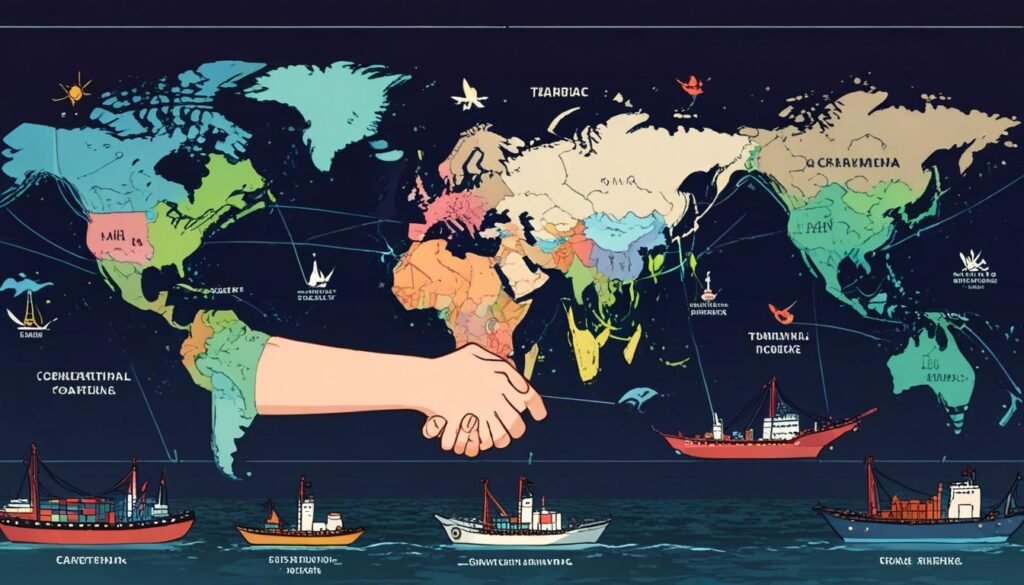**London**: In the wake of the US imposing tariffs, countries pursue varied strategies, including unilateral tariff reductions and discussions on cooperation. While some express willingness to negotiate concessions, most are cautious of retaliation, revealing a complex interplay of collaboration and competition in global trade dynamics.
In a rapidly evolving landscape of global trade policy, reactions to the United States’ recent imposition of reciprocal tariffs have unfolded extensively over the past week. The tariffs, currently paused at 10% for all countries except China for a 90-day period, have drawn varied responses from nations around the world. An analysis of these reactions highlights numerous themes that define the current trade arena.
Several countries attempted to pre-empt any potential new tariffs by unilaterally removing or lowering their own trade barriers. For instance, Israel eliminated its tariffs on all imports from the US, while India also moved to reduce some of its trade restrictions. However, the effectiveness of these measures was limited by the strict application of the US Trade Representative’s (USTR) tariff formula, which has historically not been responsive to such goodwill gestures. Observers suggest that these attempts could simply be regarded as initial bargaining chips, potentially leading to further demands in forthcoming negotiations regarding tariff reductions.
Responses from various countries displayed a predominant trend of avoiding rhetoric around retaliation. Notable exceptions included Canada, China, the European Union (EU), and Mexico, which have indicated the possibility of countermeasures. Similarly, Brazil passed legislation allowing for the imposition of countermeasures if deemed necessary. This hesitance can be attributed to the significant trade dependency many economies share with the US, highlighting their capability to inflict damage through such measures.
Furthermore, the prospect of engaging in formal disputes through the World Trade Organization (WTO) or Free Trade Agreements (FTA) to challenge the new tariffs was only explicitly raised by a handful of countries, including Australia, Brazil, Canada, and China. Conversely, Singapore has publicly stated it will not pursue such a dispute.
Interestingly, some nations appeared to welcome a lower tier of tariffs while their competitive counterparts faced heavier duties. Nonetheless, this initial optimism is expected to fade under the recent decision to equalise tariffs to 10% for all, save for China.
Amid the tariff negotiations, a number of countries have expressed willingness to negotiate concessions aimed at reducing tariffs with the US. Some proposals included Argentina’s offer of zero tariffs on 50 specific product lines, alongside Cambodia’s suggestion of 5% duties on 19 lines. However, the critical question remains whether these arrangements would ultimately favour the US or adhere to the Most Favoured Nation (MFN) principle under WTO obligations.
In response to the anticipated economic impact of tariffs, various domestic measures have been initiated, with considerable emphasis placed on strategies for trade diversification. Announcements from governments included new support mechanisms for exports, temporary financial aid to affected businesses, and strengthened industrial policies to adapt to shifting market dynamics. Australia is notably preparing for possible trade diversions and has bolstered its anti-dumping policies to counteract shifts in export targets.
Perhaps central to emerging trends are collective initiatives aimed at fostering cooperation and maintaining support for a rules-based international trade framework. ASEAN recently convened a virtual meeting of its Economic Ministers to issue a joint statement reinforcing its commitment to regional economic integration and collaboration with Dialogue Partners. Additionally, discussions surfaced about the establishment of an ASEAN Geoeconomic Taskforce, designed to monitor and evaluate responses to US trade policies.
New Zealand has also initiated collaborative efforts with a group of like-minded nations to advance free trade principles amidst tariff challenges. Prime Minister Chris Hipkins engaged in conversations with leaders from the EU, Malaysia, Vietnam, Singapore, the Philippines, Thailand, Ireland, and Fiji over a brief 48-hour window, with indications of progress towards enhanced cooperation between the EU and the Comprehensive and Progressive Agreement for Trans-Pacific Partnership (CPTPP).
Meanwhile, Australia’s Foreign Minister has reported discussions with nations in Southeast Asia, Japan, Korea, India, and the EU on similar themes. Australia’s role this year as chair of the CPTPP Commission presents an opportunity for leadership in these negotiations, although pending elections and potential sensitivities regarding US relations may temper these efforts.
As trade dynamics continue to shift, China’s President Xi Jinping is set to visit Cambodia, Malaysia, and Vietnam this coming week, expressing a desire to strengthen ties with ASEAN nations on trade. However, this rapprochement could escalate scrutiny from the US, prompting countries like Vietnam to enforce stricter controls on exports to China.
As outlined, the situation presents a complex web of responses and strategies, reflecting both cooperation and competition among global economies. Moving forward, the interplay of these factors, notably in light of the ongoing US-China rivalry, will significantly shape the global trade landscape as nations navigate the implications of recent tariff policies.
Source: Noah Wire Services

